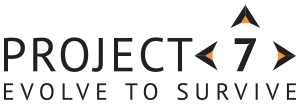
We have seen with Covid-19 that the older generations and people with certain health issues are most at risk.
With younger people for the most part faring better, could this mean that you see a workplace where a return to work is dictated by someone’s age or health?
It sounds like a HR nightmare, however the situation we find ourselves in means the question needs to be asked if businesses are going to look after their staff as they return to the workplace.
The obvious answer would seem to be that those in low risk categories return to the office whilst higher risk employees stay at home. But what if your low risk employees only make up a small percentage of your workforce? Or if your high risk employees are the most critical to your business operation? In construction for example, each employee is needed for a site to operate safely and many employees have specific skills. Worst of all, what happens if you don’t have an answer when the governments furlough scheme ends?
This is now not just a HR nightmare but something that impacts staff moral & retention, company PR and brain drain as you lose knowledge from experienced employees. Furthermore, it impacts future recruitment possibilities as you find yourself unable to offer people a safe place to work.
Here we will look at some of these challenges, how to identify them and possible solutions to consider.
Wider Family Commitments
We can’t simply categorise our employees as high or low risk and act on that information. We now need to look at their wider family commitments and how that might impact them.
Some workers may have children that are high risk so can’t send them back to school creating childcare issues. Staying on the topic of childcare, grandparents are relied on by many to look after younger members of the family, but as a high risk group this may no longer be an option.
Other families will have high risk people living with them and this is not just the elderly. People with heart conditions, undergoing cancer treatment, even asthma can be a cause for concern meaning families isolate together.
Commuting
For years we’ve been told to use public transport but Covid-19 has seen a reversal on this message with the government asking we use alternative methods. A key consideration will be how your employees get to work or even if they can. Relatively simple things like parking will become a potential point of contention and a source of anxiety for some, especially inner city workers where space is restricted.
HR
Treating people equally and fairly is the hallmark of all great companies. But how can you do this when you will be asking some people to work from home and others to risk exposure to Covid-19 by returning to the workplace?
Extended Work From Home Schemes
We’ve spoken earlier in this series about work from home setups and whilst these were fine when we had to use them, they might raise potential problems as time goes on:
- Do people need more materials and equipment?
- How will someone’s mental health be impacted as they remain isolated
- Is a remote role really what they want?
There are also less tangible things to consider. A junior, for example, may learn from a senior simply by working alongside them. Listening to conversations your peers have over the phone can influence how you deal with a situation. By not gathering in the office we risk losing this passive knowledge sharing.
Your Teams Probably Have The Answer Already
The workplace provides us with social interaction and structure. It’s likely that most people will actually be eager to find a way back to work and will have been thinking up ways they could do it.
With that in mind, engaging with your staff will be the critical first step. Knowing their needs and feelings will ensure you priorities the most urgent problems and help people return to work safely.
By including employees in this process they will have also agreed the way forward. This subconscious buy-in is extremely important for both employee morale and adoption of a new process. Rather than a process you force on them it will become their solution. A solution they developed, own and are responsible for.
New Ways Of Leading
As you adapt to your employees needs, it will likely require new styles of leadership to be adopted. You will need to be more in tune with your team’s needs and how their situation outside of the workplace impacts their situation inside the workplace.
Leaders may also be required to provide more structured training and process for their teams to follow if they are to ensure standards, culture and work ethic are maintained.
Finally, assessing an individual’s performance will need to be adapted. Attendance may no longer be a reliable KPI that all employees can be judged equally on. Instead you might start having more of a focus on tasks completed but more importantly, focus on the returns those tasks delivered.
As with all the challenges we’ve discussed in this series, if embraced, change can be a very good thing. The workplace you create for your employees could be one of their own making. Performance might not be gauged if the person turned up to work today but what impact did their work have when they did it.
In this environment employees have set their own rules for work and are much more likely to not only stick to them but aim to excel.

